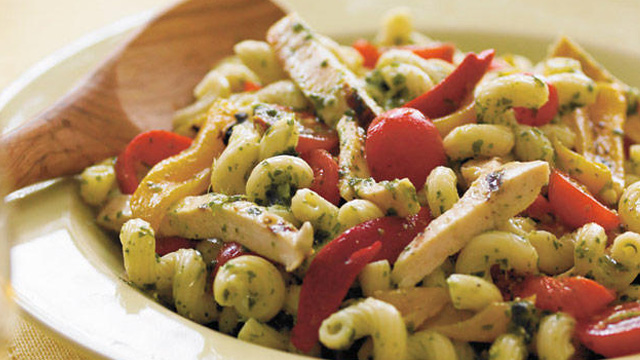Add in these healthy staples of Italian cuisine into your daily meals for extra flavour and fitness benefits.
Italian cooking pursues the Mediterranean model of eating — it focuses on simple, natural ingredients, such as tomatoes, garlic, olive oil, dark leafy greens and whole grains, making it one of the world’s healthiest diets. Research advises that the advantages of a Mediterranean-style eating pattern may comprise improved weight loss, control of blood-glucose (sugar) levels and decreased risk of depression. Here is a list of some necessary ingredients of Italian cuisine you must add to your meals.
1) Olive Oil
Make olive oil, which is high in monounsaturated fat, your go-to cooking oil. By changing butter with olive oil — the most frequently used oil in the Mediterranean — you’ll reduce on saturated fat, facilitate lowering ‘bad’ LDL Cholesterol and improve levels of ‘good’ HDL cholesterol. Moreover, extra-virgin olive oil is high in antioxidants called polyphenols that have been correlated to heart health.
Try eating like an Italian by dressing your salad greens with a drizzle of extra-virgin olive oil and a squeeze of lemon or use olive oil to sauté fresh vegetables. You can even use olive oil in place of butter in cooking.
2) Tomatoes
There’s nothing rather like a ripe tomato, whether served on a bed of fresh greens or made into an Italian red sauce to dress a bowl of hearty pasta. Tomatoes are full of vitamin C and lycopene, a heart-protective antioxidant that might also help avoid some cancers (mostly prostate). Vitamin A, potassium and folate are also among the tomato’s nutritional advantages. Though cooked tomatoes have less vitamin C, their lycopene is more obtainable and antioxidant activity is undiminished.
To increase the tomatoes in your diet, add fresh tomatoes to your salads, soups or pasta dishes, or prepare homemade tomato sauce. Or slice a juicy tomato and enjoy the simple, fresh flavour of tomatoes with a piece of whole-grain toast and a sprinkling of grated Parmesan.
3) Garlic
We know that garlic has both antibiotic and antifungal properties. In an era before antibiotics, garlic may have kept the Greeks and Romans free of infection. Garlic possesses anticancer features — studies prove it may lower breast, colon, stomach, throat and skin cancer risks. It’s heart-healthy, also, as it’s been shown to stop clotting. The secret to all these health advantages? Sulfides. Those beneficial sulfides aren’t released, though, unless the garlic is crushed or chopped and left to sit for 10 to 15 minutes before eating or cooking.
Garlic’s characteristic flavour adds dimension to just about any dish. Try adding chopped garlic to sautéed greens, salad dressings or homemade spaghetti sauce.
4) Seafood
Seafood is a staple protein in Italian diets; any and all kinds of shellfish and fish are famous, frequently several in the same dish. As fattier types like tuna and salmon supply heart-healthy omega-3 fatty acids, lean seafood like shrimp, mussels, squid and sea bass give sufficient protein, niacin and selenium. Serve fish or seafood at least twice a week.
To add more seafood and fish to your Italian cooking, try adding shrimp or scallops to your preferred Italian pasta method.
5) Whole Grains
Traditionally, raw grains (whole wheat pasta, whole grain bread, barley, whole wheat couscous) are the base of most Mediterranean diets. Leaving the grains whole lowers their glycemic index, so they are digested more gradually and create gentler rises in glucose and insulin than refined versions; they also retain all their fiber, magnesium, vitamin E and other antioxidant phytochemicals. Diets full of whole grains may fight off heart disease, diabetes and other chronic diseases. Top toasted whole-grain bread with diced tomatoes, garlic and basil and toss whole-wheat pasta with olive oil, garlic and Parmesan cheese.
6) Beans
Beans are a necessary, pleasing and healthy element frequently found in Italian cuisine. Try to exchange some of your meat and get your protein from beans and other legumes like lentils and chickpeas. By displacing meat, you’ll lower your saturated-fat intake while adding nutritious nutrients, like fiber and antioxidant-rich flavonols. Daily intake, along with grains and starches, beans give high-quality protein along with folate, calcium, iron and zinc. They also provide healthy, filling doses of fiber (both soluble and insoluble), phytates and phytosterols; studies suggest beans may help control diabetes, avoid colon cancer and decrease heart disease risk.
Add a dish or two that have beans and other legumes to your weekly menu. Try our Bean Bolognese for an energetic bean pasta dish, spread pureed beans on homemade pizza or make a minestrone soup with beans.
7) Dark Leafy Greens
To be Italian is to be grateful for dark leafy vegetables, particularly broccoli rabe, an earthy bitter brassica that pairs wonderfully with bold ingredients like sausage, anchovy and hot pepper. Dark leafy greens are nourishment superstars, offering plenty of vitamins A, C and K in addition to heart-healthy fiber and cancer-fighting antioxidants. Incorporate a generous portion of rich dark leafy greens, such as chard, kale, escarole and collards, either in a salad or sautéed with olive oil, plenty of garlic and a touch of crushed red pepper.
8) Nuts
Nut trees are roughly as ordinary as olive trees in Italy. Nuts are savoured as snacks, ground into sauces and sprinkled on salads. Nuts are laden with heart-friendly monounsaturated fat; they’re also rich sources of protein, fiber, vitamin E, folate, calcium and magnesium. Nut protein is also high in arginine, an amino acid that helps keep up healthy blood vessels. Top your salad with chopped nuts, adding nuts to your baking or making a nutty sauce like pesto with almonds, pine nuts or hazelnuts.
9) Red Wine
Italian dinner is imperfect without a glass of wine. And rather, for health, make it red wine. Enjoying wine in control during meals, not drinking alone outside of the meal and never in surplus, can boost ‘good’ HDL cholesterol, may help control blood sugar and can even help you assimilate your food and absorb its nutrients. Pour yourself a 5-ounce serving of your favourite Chianti, Montepulciano or other Italian red to pair with the earthy flavours of Italian cooking.





